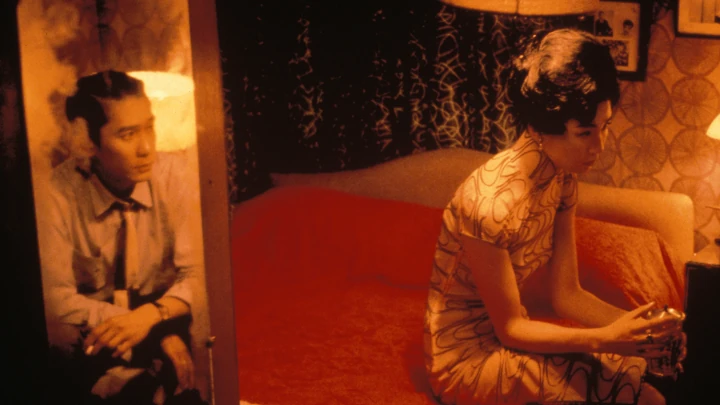Have you ever considered the enduring resonance of the whale in Herman Melville’s “Moby-Dick,” or the significance of the ring in J.R.R. Tolkien’s “The Lord of the Rings”? Maybe you’ve delved into the symbolism of the red pill in the Wachowskis’ “The Matrix.” These elements are far from mere narrative embellishments. They are symbols, potent devices that writers and filmmakers wield to impart deep, often profound meanings. Their subtle yet powerful presence in a story can elevate it from a simple narrative to an enduring legend.
Let’s explore the types of symbolism in cinema and literature, their importance and different tips for understanding it.
Key Takeaways
- Symbolism is a tool in literature and cinema that imbues words and images with complex, deeper meanings.
- It is used to reflect societal issues, offer insights into characters, and connect thematic elements.
- Symbolism is conveyed visually and auditorily, enhancing the narrative’s impact and engagement.
First, let’s define symbolism
Symbolism is like a secret code in stories, adding layers of meaning beyond what you see on the surface. It’s kind of like finding hidden treasure within a tale – it helps us understand the story better and makes us enjoy it even more.
But why is symbolism so important, and how does it make stories better? Let’s dig into this by starting with what symbolism really means.

SYMBOLISM DEFINITION
What is symbolism?
Symbolism is an artistic device where symbols represent ideas and qualities beyond their literal sense, enriching the narrative by adding depth and emotional resonance. It’s crucial for reflecting societal issues, exploring characters’ inner worlds, and connecting thematic elements in both literature and cinema.
What is Symbolism Used For?
Symbolism serves various purposes in storytelling. It can act as a mirror reflecting societal issues, a window into the characters’ minds, or as a bridge connecting the thematic elements of a story. Symbolism enriches the narrative by layering it with multiple meanings, making the experience of reading a book or watching a film more engaging and thought-provoking.
The Value of Symbolism
Importance of symbolism
The importance of symbolism lies in its power to evoke emotions and provoke thoughts in a subtle yet impactful way. It adds layers of meaning to a story, enabling audiences to find personal connections and interpretations. In the world of literature and cinema, symbolism is the invisible hand that guides viewers to not just see, but to perceive; not just to hear, but to listen.
Example of Symbolism
For instance, the film ‘Parasite’ by Bong Joon-ho is an excellent example of symbolic storytelling. The film uses its setting, the contrasting houses of its characters, and even the title itself, to represent the social class divide and the intricate dynamics of societal structures.
Ways to Layer Theme into a Screenplay
A screenplay rich in symbolism layers its theme through subtle hints and nuanced expressions. By embedding symbolism in dialogue, settings, and even in character actions, a screenplay can offer a multifaceted exploration of its themes.
Visual Type of Symbolism
Color symbolism
Color symbolism is a potent element in both literature and cinema, where colors are not just visual details but conveyors of emotion and meaning. Each color can represent a range of emotions and ideas; for example, red often signifies passion or danger, while blue might evoke calmness or sadness. Directors and writers use color to set the tone of a scene, reflect characters’ emotions, and foreshadow events.

In the Mood for Love by Wong Kar-wai
Wong Kar-wai’s ‘In the Mood for Love’ is a masterclass in color symbolism. The film uses lush, saturated colors to express the emotions and unspoken desires of its characters. The use of reds, greens, and yellows throughout the film creates a visually stunning tapestry that adds depth to the story.
The Colors of Stanley Kubrick
Stanley Kubrick, known for his meticulous filmmaking, often employed color symbolism to add a layer of meaning to his films. From the chilling reds in ‘The Shining’ to the futuristic hues in ‘2001: A Space Odyssey’, Kubrick’s use of color is a study in how visual elements can enhance narrative symbolism.
Character symbolism
Character symbolism involves using characters in a story as symbols to represent broader themes or ideas. This type of symbolism is often used to explore complex issues and emotions, with characters embodying ideas such as innocence, corruption, love, or freedom.
Example – Forrest Gump
In ‘Forrest Gump’, the feather that appears at the beginning and end of the movie is a symbol of destiny and the randomness of life. The character of Forrest himself symbolizes innocence and the unpredictability of life.
Religious & spiritual symbolism
Religious and spiritual symbolism is frequently found in literature and film, offering layers of meaning related to faith, morality, and the human condition. These symbols can range from specific religious icons to more abstract concepts like light representing enlightenment or hope.
Example – Symbolism in The Matrix
‘The Matrix’ is a film rich in religious and philosophical symbolism, with references to Christianity, Buddhism, and Gnosticism. It uses these symbols to explore themes of reality, freedom, and destiny.
Nature symbolism
Nature symbolism is one of the most profound and versatile types of symbolism in storytelling. It can represent life cycles, growth, decay, and a range of human emotions. Nature elements like forests, oceans, and seasons often symbolize the inner journey of characters or the overarching themes of the narrative.
Example – Shawshank Redemption
In ‘The Shawshank Redemption,’ for instance, the recurring motif of the tree represents hope and the promise of freedom. The film masterfully uses natural imagery to juxtapose the confinement of prison life with the idea of spiritual freedom and redemption.
Animal symbolism
Animal symbolism in stories often serves to mirror human traits or societal issues. Animals can be symbolic of human emotions, virtues, or vices, and are frequently used to communicate themes of freedom, cunning, loyalty, or innocence.
Example – Animal Farm
George Orwell’s ‘Animal Farm’ is a prime example, where farm animals symbolize different factions and characters of the Russian Revolution. This allegorical novella uses animals as symbols to critique power structures and human nature.
Object symbolism
Object symbolism involves everyday items being used to represent deeper meanings or themes. These objects, whether mundane or unique, carry symbolic weight, contributing to the storytelling by embodying complex ideas or emotions.
How Symbolism is Uniquely Used in Film
The world of cinema, with its visual and auditory splendor, offers a unique canvas for symbolism. Unlike literature, where symbolism is woven through words, cinema uses visual imagery, color, sound, and even camera angles to embed deeper meanings in the narrative.
Visual Symbolism
In cinema, visual symbolism can be both overt and subtle. A classic example is the use of color in Zhang Yimou’s “Hero,” where different colors represent various narrative perspectives and emotional tones. Similarly, in Guillermo del Toro’s “Pan’s Labyrinth,” the labyrinth itself symbolizes the protagonist’s journey of discovery and transformation.
Objects in films can also carry symbolic weight. For example, the spinning top in Christopher Nolan’s “Inception” represents the fine line between reality and illusion, a central theme of the movie.
Symbolism through Cinematography
Cinematography plays a vital role in conveying symbolism in film. The use of lighting, camera angles, and movement can subtly influence the viewer’s interpretation of the scene. In Alfred Hitchcock’s “Psycho,” for example, the use of shadows and camera angles heightens the sense of suspense and foreboding, lending a symbolic dimension to the psychological thriller.
Audio Symbolism
Sound in cinema, including musical scores and ambient noises, often carries symbolic meaning. John Williams’ score for “Star Wars,” for instance, uses leitmotifs — recurring musical themes associated with characters or concepts — to symbolically represent various elements of the story.
The Impact of Symbolism in Cinema
Symbolism in cinema enriches the viewer’s experience, offering multiple layers of meaning. It allows filmmakers to communicate complex themes and emotions visually and auditorily, creating a more immersive and thought-provoking experience. Just like in literature, symbols in film often linger in the audience’s mind, shaping their interpretation and appreciation of the story.
Symbolism in Literature and Cinema
While both literature and cinema extensively use symbolism, the mediums differ in how they present and convey these symbols. Understanding these differences helps in appreciating the depth and breadth of symbolism across different art forms.
| Aspect | Literature | Cinema |
|---|---|---|
| Medium-Specific Symbolism | Symbolism conveyed through words, relying on reader’s imagination. | Utilizes visual and auditory elements, with symbols being more immediate but also more open to interpretation. |
| Example | In “Animal Farm” by George Orwell, farm animals symbolize different factions of the Russian Revolution. | In “Blade Runner” by Ridley Scott, origami figures are a visual metaphor for characters’ identities and broader themes. |
| Interpretation | Symbolic meaning derived from context, narrative style, and character development. | Visual storytelling allows for a varied and immediate interpretation of symbols. |
| Role of Interaction in Symbolism | A personal and introspective experience. Readers engage with symbols at their own pace. | Offers a collective interpretation of symbolism, influenced by the shared experience of viewing. |
| Evolution of Symbolism Across Mediums | Reflecting societal changes, employs more abstract and open-ended symbols for broader interpretations. | Reflects societal and artistic trends with evolving symbolism that invites a range of interpretations, often more abstract than in earlier works. |
| Integrating Multiple Senses | Engagement is primarily intellectual and imaginative. | Integrates sight, sound, and the sense of time for a multisensory and immersive symbolic experience. |
Tips for Understanding and Appreciating Symbolic Content
Interpreting symbolism, whether in literature or cinema, can be both a challenging and rewarding experience. It requires a keen eye and an open mind. Here are some tips to enhance your understanding and appreciation of symbolic content.
1. Context is Key
Understanding the context in which a piece is created can greatly enhance your interpretation of its symbols. Historical, cultural, and personal contexts play a significant role in shaping symbolism. For example, knowing the socio-political climate during which George Orwell wrote “1984” can deepen your understanding of its symbolic elements.
2. Look Beyond the Literal
Symbolism often resides in the realm of the metaphorical and the abstract. When engaging with a film or a book, it’s essential to look beyond the literal meaning of objects, characters, or scenarios. Ask yourself what they could represent in a broader sense.
3. Embrace Multiple Interpretations
One of the beauties of symbolism is that it can have multiple interpretations. Your understanding of a symbol might differ from someone else’s, and that’s perfectly okay. Each interpretation can add depth to the overall narrative and its themes.
4. Pay Attention to Recurring Elements
In both literature and cinema, pay close attention to motifs or elements that recur. These are often significant symbols. For instance, the repeated mention of a certain object or color, or a recurring camera shot in a film, is likely symbolic.
Closing Thoughts
The study of symbolism in literature and cinema is not just an academic pursuit but a journey into the heart of storytelling. It encourages us as readers and viewers to look beyond the obvious, to search for meaning in the smallest of details, and to appreciate the profound connections between our lives and the stories we tell.
Check out 5 best video production management software
About RFM
RFM is a web-based video, TV, and film production management software that offers various features for professionals in the entertainment industry. It allows users to write professional project briefs and descriptions, talent, and actor showcases, visualize scenes with shot lists, media sharing and manage various aspects of production, including call sheets, shooting schedules, and script breakdowns. RFM is designed to help teams collaborate more effectively during the production process, making it a valuable tool for filmmakers, photographers, and video production companies
https://rfm.rezaid.co.uk/features
Read more of our articles here: What is ADHD in SEO?